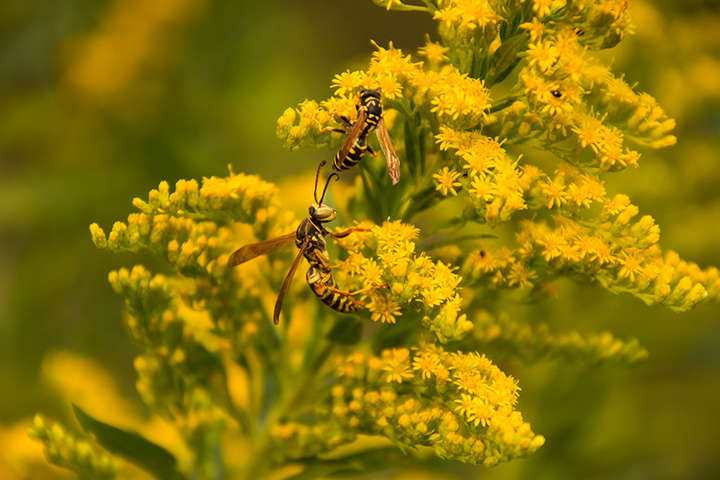Turning back time: Restoring Saint Paul’s historic prairies

By Brett Stolpestad
“To make a prairie it takes a clover and one bee,
One clover, and a bee,
And revery.
The revery alone will do,
If bees are few.”
– Emily Dickinson
Like many Plains States, Minnesota was once home to millions of acres of prairie grassland. Native grasses like big blue stem, little blue stem, switch grass, Indian grass, porcupine grass or side-oats grama, and forbs such as goldenrod, prairie smoke and blazing star covered the western and southern parts of the state.

However, if you travel through the southwest region of Minnesota today, you would be hard-pressed to find an area with native remnant prairie. The vast majority of Minnesota’s native prairie has been diminished to nearly nothing, largely as a result of human activities such as farming, cattle grazing and fire exclusion. In fact, according to a State of Minnesota report, it is estimated that roughly 150,000 out of 18 million acres of native prairie remain intact today. That’s less than one percent. The importance of prairies as diverse and valuable ecosystems cannot be overstated, as they support hundreds of species of wildlife and provide us with plant material that we use for our medicines.

As a city dweller, I have had precious few opportunities to visit Minnesota’s prairies. Fortunately, the City of Saint Paul has made an effort in recent years to restore previously industrialized areas back to natural prairie. The 29-acre Bruce Vento Nature Sanctuary is a successful example. In the mid- to late-1800s, the Bruce Vento site was a developed industrial area, home to the North Star Brewery in 1853 and a rail yard in the 1880s. The site was abandoned in the 1970s until a coalition of volunteers, Parks and Rec planners and technicians, and local organizations launched an effort to restore the historic site back to natural prairie and oak savanna in 2004. The Bruce Vento Nature Sanctuary was declared a Saint Paul park the following year.

If you visit the sanctuary today, you will likely find yourself standing beneath limestone bluffs in a field of little bluestem with Indian grass, big bluestem and oak trees interspersed throughout. Small ponds are rimmed with wet or mesic prairie plant species such as purple prairie coneflower, New England aster, goldenrod and vervain.

Old artifacts and remnants can still be found throughout the sanctuary, calling back to its old industrialized days. Yet the sanctuary holds once again a reminder of what the site meant before the era of industrialization, when native Dakota people visited the sacred site of Wakan Tipi (“spirit house”), also known as Carver’s cave.

Even beneath the shadow of the Saint Paul skyline along the Mississippi, the Bruce Vento Nature Sanctuary echoes what the native Dakota people had once held sacred, standing as a reminder that the prairie is something to be cherished, respected and, as Dickinson surely would agree, beheld with reverie.
